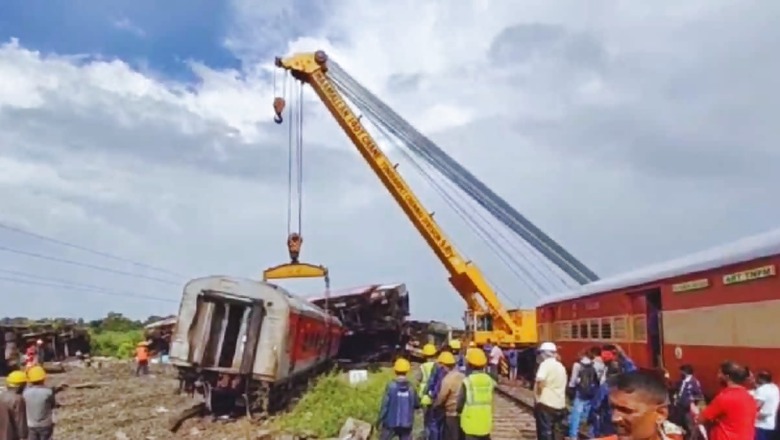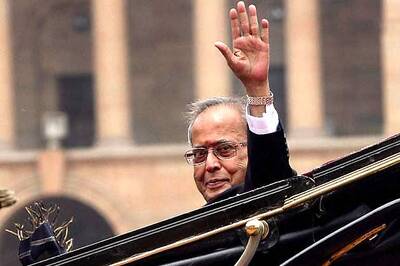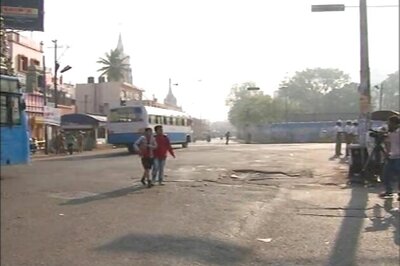
views
The Mysuru-Darbhanga Bagmati Express (Train No. 12578) on Friday night derailed following a collision with a stationary goods train at Kavaraippettai railway station near Chennai, leaving at least 19 passengers injured.
No fatalities were reported and the injured passengers were taken to the nearby hospitals for treatment, said officials, adding that three were in critical condition.
The accident occurred at 8:30 pm on the Chennai-Gudur section, between Ponneri and Kavaraippettai stations, causing massive damage to both trains. A few trains including Dhanbad-Alappuzha Express and Jabalpur-Madurai Superfast Special Train were diverted due to restoration work at the accident site.
What Led To Train Derailment?
RN Singh, General Manager of Southern Railways, said the passenger train was not supposed to enter the loop line where a goods train was stationed. After leaving Chennai, the signals for the Mysuru-Darbhanga Express were correctly followed by the driver, he added.
He further said that despite having a green signal for the main line, the train entered the loop line and hit the goods train from behind, causing the derailment of its 12 coaches and injuries of passengers.
“The passenger train was supposed to pass via the main line…But despite having signals for the main line the train entered the loop line. It hit the goods train from behind and because of this engine derailed. The pilot and loco pilot are hale and hearty. Fortunately, there was no death. The injured were immediately moved to the nearby hospital,” he was quoted as saying by news agency ANI.
He added that the reasons behind this accident are a matter of investigation.
#WATCH | Tamil Nadu: R.N. Singh, General Manager of Southern Railway, says, “This train was going towards Gudur and further to Andhra Pradesh…While going towards Gudur at this station a goods train was stabled at the loop line and this was given precedence. This was supposed to… https://t.co/hZCKT3Tj5c pic.twitter.com/eb6lHH1m9J— ANI (@ANI) October 11, 2024
What Prevented Fatalities?
In the aftermath of the train accident, the railway officials confirmed injuries to 19 passengers on board, while there were no fatalities reported.
The Darbhanga-bound Bagmati Express reportedly had Linke Hofmann Busch (LHB) coaches, a technologically advanced system designed to enhance safety, comfort, and efficiency in rail travel. It’s believed that casualties were prevented due to the high-end coaches of the train.
Unlike traditional Integral Coach Factory (ICF) coaches, LHB coaches boast several cutting-edge features, including an anti-climbing arrangement, air suspension (secondary) with a failure indication system, and a less corrosive shell.
The Indian Railways manufactured over 31,000 LHB coaches in the past nine years, marking a significant stride towards modernisation, claimed a report published in November 2023.
These coaches are currently being manufactured at three prominent production facilities: Rail Coach Factory (RCF-Kapurthala), Integral Coach Factory (ICF-Chennai), and Modern Coach Factory (MCF-Rai Bareli). The Indian Railways aims to equip the majority of trains with LHB coaches in the coming times.




















Comments
0 comment